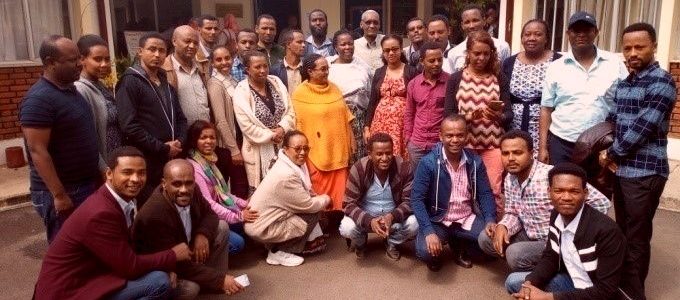Ethiopia
Over 1.2 million Ethiopians are currently living with HIV/AIDS. In the age group 15-29 years, there were more women living with HIV/AIDS than men; in the age group 30+ years, there were more men living with HIV/AIDS than women (AIDS in Ethiopia, sixth report)
psychosocial care and counseling services to children, adolescents and families affected by HIV and AIDS
Compared with other Horn of Africa countries, Ethiopia has a low generalized HIV epidemic with diversity among the regions and key populations. According to 2014 HIV estimates, the national HIV prevalence in Ethiopia is 1.14%, with urban populations being more affected than rural areas, and the ratio of HIV infection in females is twice that in the male population (22).
Ethiopia has made commendable strides in the fight against HIV. Between 2000 and 2011 the annual rate of new HIV infections declined by 90% and of AIDS-related deaths by 53% (23). The Ethiopia Federal HIV/AIDS Prevention and Control Office 2014 report stated the number of sites providing PMTCT services increased from 2,154 in 2013 to 2,495 in 2014. In the same period, the number of ART service delivery sites also increased from 913 to 1,047(26). To address the human resource challenges and to create awareness and demand for HIV services, Ethiopia implemented an extensive community health strategy that included task shifting and deploying health extension workers and a health development army. This led to increased uptake of HIV testing and counselling services (27).
Nevertheless, there are still challenges. In 2016 it was estimated that there were about 21,565 new HIV infections; of these 2,212 were of children under 15 years (24). There was a sustained increase in new HIV infections among young adults (15¬¬¬¬¬¬–24 years) between 2008 and 2014; currently the highest HIV prevalence rates in the country are among young adults (25). Countrywide, ART coverage is still sub-optimal, and is worse among children. In 2014 about 339,043 adults (65% of ART coverage) received ART while paediatric coverage was 22,955 or 15% (26). The paediatric HIV population consists mostly of older children who were vertically infected in earlier years when coverage and effectiveness of PMTCT in the country were low with high rates of mother-to-child transmission (24).
Participants were engaged in a session to reflect and give a general opinion of the two weeks training program.
. He reiterated the fact that the FMOH in collaboration with ANECCA organized the TOT to target all regions.
ART coverage for children and adolescents living with HIV is low compared with adults, where ANECCA implemented a regional project to improve coverage and quality of care.
Participants were engaged in a session to reflect and give a general opinion of the two weeks training program.
. He reiterated the fact that the FMOH in collaboration with ANECCA organized the TOT to target all regions.


